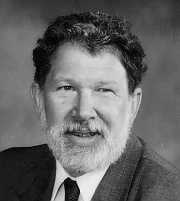

Index
 |
 |
Site Index |

| An Administration View by Robert A. Levy Associate Senior Vice President, University of Tennessee |
 |
1. to manage, regulate, or rule;Obviously, the first set of meanings has a more authoritarian ring to it, and a focus on maintaining the status quo; the second set seems more to do with consensus-building in order to reach an intended objective. In Academe, maybe we should remember that there are these two types of governance.
2. to guide, influence, or sway.
The Board of Trustees, which is the governing body of The University of Tennessee, shall have full and complete control over its organization and administration.Both constraint and clarity are almost immediately added in Section 2, which says that the Board shall "Establish policies concerning the scope of the educational opportunities to be offered [and] prescribe admission, progression, and retention requirements for the University and particular programs of instruction; however, the planning and development of curricula shall be the function of the faculties."
The Academic Committee shall approve and recommend to the Board, or to the Executive Committee, proposals concerning the development of new academic programs and the revision of existing programs relating to instruction, research, and service; the establishment of new academic organizations, such as major campuses, colleges, and institutes; the adoption of admission, progression, and retention standards; and the adoption and revision of faculty personnel policies.But, Charter and Bylaws aside, what else can be said about governance at UTK? Well, we all believe that it is "shared." My experience at UT suggests that there are governance players well beyond the "faculty" and "administration" groups that my old prof revealed to me in 1963. Today, I believe, the people who add value to an institution have both a right and an obligation to help chart its course. A public university has many such people: faculty members, administrators, and other employees; students and alumni; The People (i.e., their elected representatives, the bureaucracies that support those office-holders, and the trustees and commissioners named by them); philanthropists and others who help to keep the lights on. There may be more, but my point is that many, many constituencies logically should have some degree of something to say about how some part or parts of a public university should be governed.
"Time had been when professors had enjoyed the status of a guild of scholars. It was painful to them to be reminded that as guild control had given way to control by a lay governing board, professors had settled into this subordinate position." (Quote from John Brubacher and Willis Rudy, Higher Education in Transition, A History of American colleges and Universities, 1636-1976 (New York: Harper & Row, 1976). What's more, the ideal of a professorial guild seems, if anything, more threatened than ever by bureaucratic regulations, legal restrictions, and a professorate that identifies more with its subject-matter distinctions than with the academy as a whole.The AAUP, which speaks what many faculty members feel, bills its 1966 Statement as "a call to mutual understanding regarding the government of colleges and universities. Understanding, based on community of interest, and producing joint effort, is essential." The Statement goes on to say that universities like ours are made of highly interdependent parts and stakeholders who need to communicate well and work together, even though "differences in the weight of each voice, from one point to the next, should be determined by reference to the responsibility of each component for the particular matter at hand." But as the Statement progresses, it becomes clear that AAUP's vision of mutuality is very different from the Trustees' notion of the "function" of the faculty. AAUP says,
The faculty has primary responsibility for such fundamental areas as curriculum, subject matter and methods of instruction, research, faculty status, and those aspects of student life which relate to the educational process. On these matters the power of review or final decision lodged in the governing board or delegated by it to the president should be exercised adversely only in exceptional circumstances.... The faculty sets the requirements for the degrees offered in course, determines when the requirements have been met, and authorizes the president and board to grant the degrees thus achieved.... Faculty status and related matters are primarily a faculty responsibility; this area includes appointments, reappointments, decisions not to reappoint, promotions, the granting of tenure, and dismissal.... The faculty should actively participate in the determination of policies and procedures governing salary increases.... The chair of head of a department serves as the chief representative of the department.AAUP President James T. Richardson, in the "Opinion & Arts" section of the 12 February 1999 issue of The Chronicle of Higher Education, says that
The A.A.U.P.'s statement was never a vehicle to give college and university faculties dominant power, but was meant to establish a balance of powers. It was an acknowledgment that governing boards' hardheaded business skills, coupled with faculties' insistence on scholarly excellence, breed a constructive, if not always easy, tension. For some three decades, faculty members have accepted the fact that boards of regents or trustees have final, fiduciary responsibility for their institutions and a role in arbitrating controversial disputes. But faculty members also have asserted that boards must delegate substantial authority to the professorate in educational issues--curriculum, student grading, admissions, and professional standards. Faculty members have under stood that administrative decisions affecting them will not always be to their liking, but will at least be informed by faculty advice--through peer review, faculty councils, and the like.If, in halcyon days of yore, two parties (faculty and administration) were able to share governance, those days are gone. Now there are too many parties. Now the university itself is too multifaceted. Now the university's environment is to complex and fragmented. Maybe a new model is needed.
| Senate Directory Officers Committees Members |
Governing Documents Senate Bylaws Faculty Handbook Tenure Policy |
Search
Reports |
Calendar
Archives |
Resources
Senate Home |